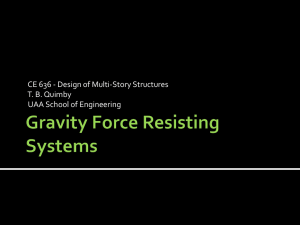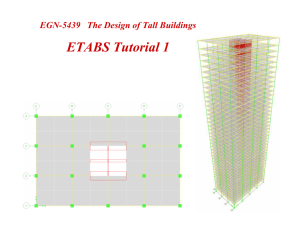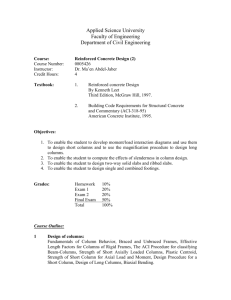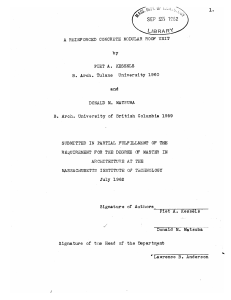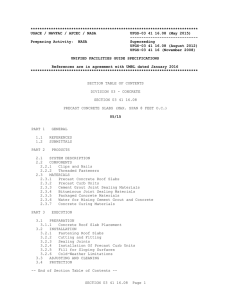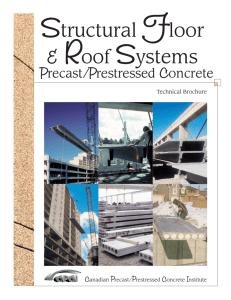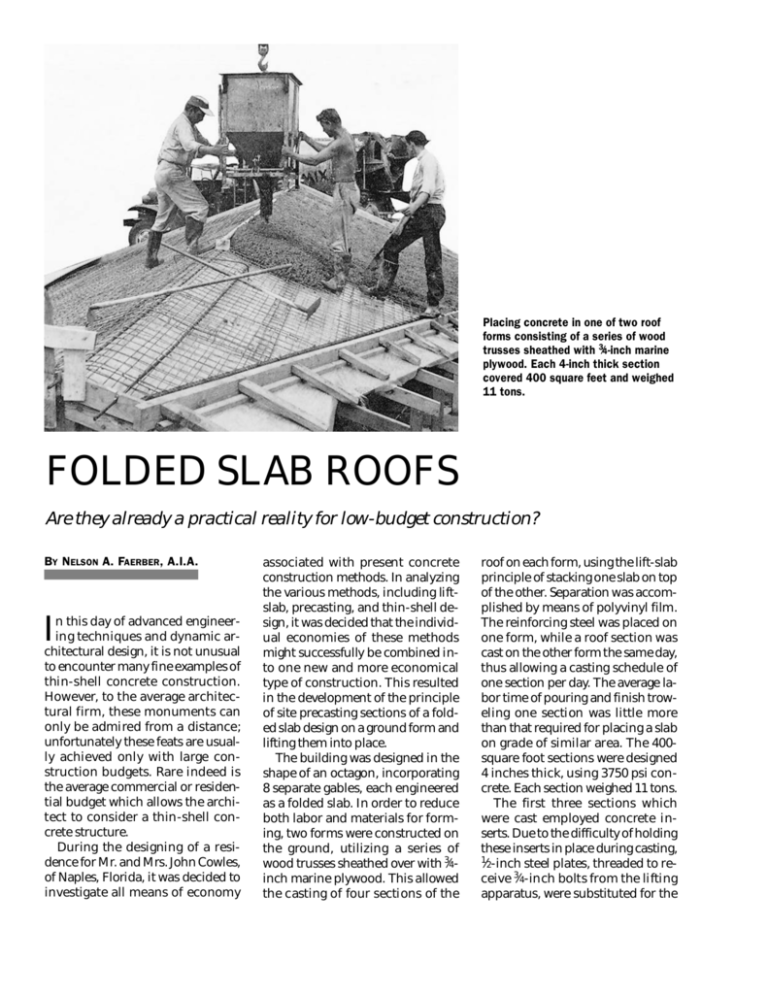
Placing concrete in one of two roof
forms consisting of a series of wood
trusses sheathed with 3⁄4-inch marine
plywood. Each 4-inch thick section
covered 400 square feet and weighed
11 tons.
FOLDED SLAB ROOFS
Are they already a practical reality for low-budget construction?
BY NELSON A. FAERBER, A.I.A.
I
n this day of advanced engineering techniques and dynamic architectural design, it is not unusual
to encounter many fine examples of
thin-shell concrete construction.
However, to the average architectural firm, these monuments can
only be admired from a distance;
unfortunately these feats are usually achieved only with large construction budgets. Rare indeed is
the average commercial or residential budget which allows the architect to consider a thin-shell concrete structure.
During the designing of a residence for Mr. and Mrs. John Cowles,
of Naples, Florida, it was decided to
investigate all means of economy
associated with present concrete
construction methods. In analyzing
the various methods, including liftslab, precasting, and thin-shell design, it was decided that the individual economies of these methods
might successfully be combined into one new and more economical
type of construction. This resulted
in the development of the principle
of site precasting sections of a folded slab design on a ground form and
lifting them into place.
The building was designed in the
shape of an octagon, incorporating
8 separate gables, each engineered
as a folded slab. In order to reduce
both labor and materials for forming, two forms were constructed on
the ground, utilizing a series of
wood trusses sheathed over with 3⁄4inch marine plywood. This allowed
the casting of four sections of the
roof on each form, using the lift-slab
principle of stacking one slab on top
of the other. Separation was accomplished by means of polyvinyl film.
The reinforcing steel was placed on
one form, while a roof section was
cast on the other form the same day,
thus allowing a casting schedule of
one section per day. The average labor time of pouring and finish troweling one section was little more
than that required for placing a slab
on grade of similar area. The 400square foot sections were designed
4 inches thick, using 3750 psi concrete. Each section weighed 11 tons.
The first three sections which
were cast employed concrete inserts. Due to the difficulty of holding
these inserts in place during casting,
1
⁄2-inch steel plates, threaded to receive 3⁄4-inch bolts from the lifting
apparatus, were substituted for the
remaining sections. The edge of
each section was cast in a key to accommodate a 11⁄2-inch grouted joint
at each valley. Each slab was cast 3
feet short of the total radius dimension of the roof, to allow for a 6-foot
octagonal skylight. After the sections were erected a reinforced concrete tension curb was poured
around the skylight, receiving three
No. 5 bars turned up from each of
the 8 slabs.
The slabs rested directly on 6inch lally columns with 12- by 12inch bearing plates at the top. A
spacer block 1 1⁄2 inch wide was
placed on top of each of the bearing
plates to prevent the adjoining section edges from compressing by
contact. Around the 8 exterior
columns a peripheral 1-inch tie-rod
with a turnbuckle at each bay was
employed. The turnbuckles allowed
plumbing of columns, and were
welded after all slabs were in place.
Prior to erection of the slabs temporary X-bracing and 6- by 6-inch
wood columns were used beneath
the ridge of each section to lessen
the initial thrust to the columns before the adjoining slabs were set in
place.
In this first project an erection
time of 28 hours was required. Unfortunately it was found necessary
to make slight alterations and adaptations to the lifting apparatus for
each concrete section, and many
hours of erection time could have
been eliminated by the use of a
more accurate template for locating
the lifting plates. This item, plus
other small difficulties correctable
in future projects, should easily cut
the erection time in half.
In spite of these problems, 3200
square feet of concrete roof was installed for a cost of $2.25 per square
foot of roof area, including the supporting columns. The roof surface is
being finished with three coats of
masonry water-repellent coating,
for approximately one-half the cost
of conventional built-up roofing. In
this particular design, acoustical
plaster and stucco will be employed
on the underside of the slabs to
SITE PRECAST FOLDED SLAB ROOF
Summation of Construction Costs
I FORMWORK
Material
Labor
Total Cost
$1,067.00
1,041.00
$2,108.00
$.65 per square foot
II SUPPORTING STRUCTURE
Steel Columns, Tie
Rods & Lifting Beams,
etc.
Total Cost
$768.00
$.24 per square foot
III CASTING SLABS
Material:
Steel
Conc.
Labor
Total Cost
$1,759.00
805.00
720.00
$3,284.00
$1.03 per square foot
IV ERECTION
Total Cost
$1,056.00
$.33 per square foot
Total Construction Cost = $7,216.00 @ 3200 square foot =
$2.25 per square foot
Roof slabs were cast one on top of the other as in the lift-slab method of
construction. Sheets of polyethylene film were used to facilitate separation. Note
the keyed edges which were formed to accommodate 11⁄2-inch grouted joints
between adjacent sections.
Placing the last of 8 sections which formed the folded-slab roof of the octagonal building. Each section was cast 3 feet
short of the total radius of the roof to provide a 6-foot octagonal skylight in the center.
achieve a finished ceiling. With additional care in steel trowel finishing of the sections during the casting process, this extra expense for
finished ceiling will be eliminated
entirely, thus further reducing the
cost of the finished roof in place.
It is the opinion of the architect
that this project proves that a vast
field of medium-budget construction can now benefit from the architectural and engineering advantages of precast thin-shell concrete
design.
PUBLICATION #C580508
Copyright © 1958, The Aberdeen Group
All rights reserved

